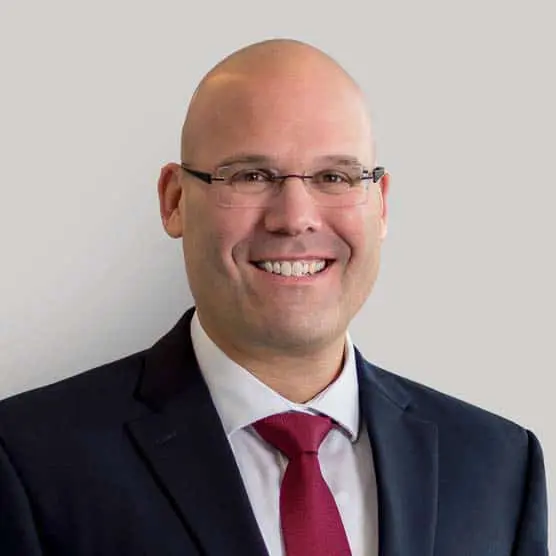This year’s National Investment Center (NIC) fall conference proved to be a busy and productive event, as more than 2,800 industry participants convened to explore the near-term challenges and long-term opportunities for the seniors housing and care sector. The turnout was strong, up 15 percent over last fall’s event according to Brian Jurutka of NIC, as operators, lenders, and other industry experts gathered to discuss deals, learn from informative sessions, and prepare for the all-important next chapter in the sector’s post-pandemic era.
Waiting for the Future
In one of the marquee sessions that kicked off the event, influential economic futurist Jason Schenker, founder of Prestige Economics and chairman of The Futurist Institute, discussed what tomorrow’s healthcare sector may look like. From emerging technologies that improve data collection to changes in how people access care, there are several landscape-shifting trends that are already under development. Unfortunately, the rather dire economic outlook of the present and near future will inevitably stall and complicate such innovation and progress. Among the most prominent of these is finding and compensating well-qualified staff.
“The next two to three years are going to be tough,” he said. “You’re going to be scavenger hunting for your labor. Labor costs are high.”
Those who are able to weather the current economic storm will be rewarded, however, as Schenker asserted the industry’s mid-term outlook remains positive. With the much-anticipated flood of baby boomers set to reach 80 in 2026, communities that demonstrate operational resilience while preventing negative economic forces overwhelming their business will find a future more fruitful and less stressful than the present.
The Rise of ESG
Experts on the environmental, social, and governance (ESG) panel dived into the increasing appeal and benefits of operating a company with ESG goals in mind, which include a focus on the sustainability and societal impact of business strategies and investments. As an owner/operator, focusing on ESG efforts can help reduce operating expenses, increase tenant retention and marketability, and retain and attract talent. In addition to these benefits, being able to present an ESG strategy to potential investors allows for differentiation of owner/operators in the fundraising process. Focusing on ESG provides a competitive advantage that can be relatively cost efficient and implemented quickly.
Fortunately, the seniors housing and care sector at its core is an industry focused on wellness. Due to this focus, many owners and operators in the space contribute to ESG goals without even realizing it.
That said, many companies are still determining how they can incorporate ESG into their businesses. They often need guidance on how to get started. As the session moderator said, “You just have to start somewhere,” as the process is nothing short of a journey. When developing the ESG strategy and deciding what to measure and report on, companies should ask themselves: What is our ESG story and what do we want to be known for?
In noting the strong momentum of the concept, one expert relayed that a few years ago the interest in ESG was minimal at best. Now, based on his experience, industry players want to hear about ESG and its possibilities more and more, as the topic increasingly appears on conference agendas nationwide.
Repositioning Takes on Increased Importance
As usual, NIC’s chief economist Beth Mace provided insightful commentary backed by data as she moderated a panel on repositioning senior housing properties. Addressing occupancy, she pointed out that pre-Covid the average occupancy rate for senior housing was 87.2 percent. It hit its low at 77.9 percent, and by the second quarter of this year it had climbed to 81.4 percent. It should be mentioned that NIC MAP released third quarter data a few weeks after the NIC Fall Conference, and the positive momentum continued, as occupancy rose for the fifth consecutive quarter to 82.2 percent. Things are clearly headed in the right direction, slowly but surely, yet the reality is occupancy remains five percentage points shy of pre-pandemic levels, leaving plenty of catching up to do.
Mace pointed out that when looking at the distribution of occupancy rates there are notable disparities. On the positive side, 32 percent of communities have occupancy rates above 90 percent, meaning roughly a third of communities are thriving despite post-pandemic challenges. On the other side, however, approximately 40 percent of communities are below 80 percent occupancy, and Mace added, “If you’re in that second group, you really have to think about why that is the case and what you can do about it.”
When it comes to strategies to boost occupancy, operators are finding that in a post-Covid environment and in the middle of a difficult market swing, constantly repositioning communities to meet shifting demand is essential. To stay competitive, operators are learning that they simply cannot get too comfortable and must constantly analyze data, consider the macro trends and the distinctions of the local economy, and take a fresh look at their communities. As one panelist put it, “Operators should ask themselves—if I were to develop this today, what would it look like and how would it work?”
Varying Values
The final session of the conference was “Valuing Skilled Nursing and Sourcing Capital in a Turbulent Market.” The topic, an enduring favorite at NIC conferences, featured analysis and perspectives from seasoned valuations experts representing a leading lender, public real estate investment trust, operating companies, and brokers. Panelists discussed the latest trends, emerging factors for consideration, views on operational management, and short and long-term outlooks for valuations.
Despite the immense challenges facing the skilled nursing sector today, such as staffing shortages, rising costs, and changes to federal regulations, investors remain engaged and active. According to NIC MAP Vision data, private buyers are purchasing the majority of assets, closing approximately $1 billion in skilled nursing transactions as of the second quarter of 2022. The price per bed ranges significantly—as low as $38,000 and as high as $165,000. The average price in the second quarter of this year was approximately $100,000.
Why is the price per bed range so enormous? Session panelists noted several factors are at play, notably changes in reimbursement from state to state and the number of Medicaid beds as compared to Medicare beds. Operating expenses also play a role, particularly wage growth and staffing shortages.
Lenders and borrowers well understand the financial impact of higher wages and what that does to earnings, valuations, and potential financings. In addition, the difficulty finding labor has a direct impact on revenues. If they had sufficient labor to meet their staffing ratios, many borrowers at 80 percent occupancy feel they could be at 90 percent. Wage growth in itself is clearly a challenge as it directly affects the bottom line. But equally challenging is the issue of staffing shortages, as a community cannot increase revenue if it doesn’t have the staff to facilitate a growth in business.
Once operators are able to find the labor, they often then find that costs have risen substantially. Panelists noted that labor costs have increased as much as 20 percent in the last two years, causing great strain for operators. One way to offset that is to avoid using agency staffing, as operators that are able to avoid agency staffing or shift away from it often realize significant savings.
As the conference came to a close, it was clear that despite the labor woes and the difficult economic conditions facing our industry and nation, those in the seniors housing and care sector are up for the challenge. With Covid subsidies in the rearview mirror and new and improved procedures and strategies in place, operators that are prepared for the challenges of the present and the near future will find brighter days ahead as the boomer-driven demand begins to materialize.

